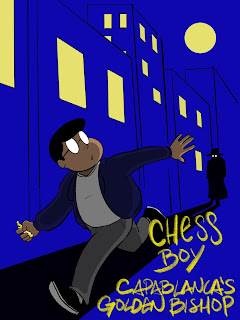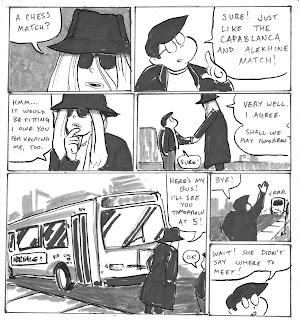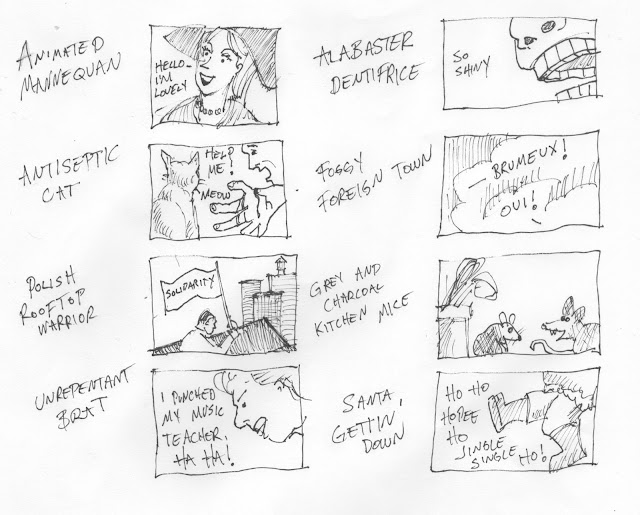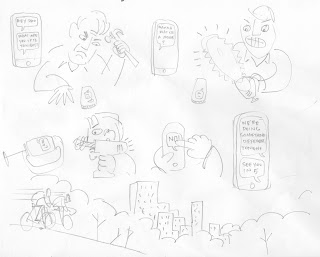 |
| Artist Rendering of Dr. Cornelius "Thumbs" Pianeer in the Appalachian Highlands. |
The Early Life of Cornelius
Pianeer
Dr. Cornelius "Thumbs"
Pianeer was born in the state of Michigan in the 1950s, the fifth child of
nine, "like the center note of a kalimba with two older brothers and two
older sisters and two younger brothers and two younger sisters and I learned
how to play them all."
As a child he showed no
musical talent whatsoever, though he was good at mischief and everyone could
count on him to come up with a plan when a plan was needed. "That's what
you call 'im-prov-i-za-tion,' son."
Dr. Pianeer dropped out of
college when he was 19 and went to Ireland where he worked shoveling cow poop
on a farm until he learned some humility. It was in Limerick, Ireland, while
playing his thumb piano in a cow pasture that he was visited by the fairies and
given the gift of song.
Unable to find a lass and
settle down, Dr. Pianeer returned to Michigan where he flunked Basic Harmony
and decided to pursue the ministry. He sold all his possessions, bought a backpack and went to the Grand Canyon
where he lived in a cave for a month and lost his favourite thumb piano. Dr.
Pianeer then followed the rain to the great northwest where he found an Irish
lass and settled down on the shores of Puget Sound.
Thumb Piano Brings the Rain
It's said the thumb piano
brings the rain. In Africa, thumb piano musicians are recruited to
drought-stricken areas. Dr. Pianeer says "the thumb piano should always be
played near running water because that's the rhythm it follows. If there's no
running water, the thumb piano will make its own."
Living on the edge of a rain
forest on the Olympic Peninsula, Dr. Pianeer perfected his style without
causing problems for the locals due to all the rain. On vacations, his Irish
wife asked him to leave the thumb pianos at home.
Dr. Pianeer was living the
good life, roaming the mountains and the seas, making up shanties on his thumb
pianos, calling in tides and sending out vibes. That all ended when his Irish
bride went a little crazy and moved to New Orleans and Dr. Pianeer tagged
along.
At the Crossroads in New
Orleans
By this time, Dr. Pianeer had
secured a Doctorate of Divinity from the Universal Life Church of Seattle,
Washington, and paid $89 extra to get a fancy diploma, clergy cards, and a
binder with all the language for all the typical ceremonies of the world's
major religions. He was prepared to recite ceremonies for birth, transition to
adulthood, marriage, sickness, death and despair in five faiths. In New
Orleans, he added a few more.
Dr. Pianeer quickly became
involved with the Catholic Church and several Voodoo churches in New Orleans,
working as a teacher, musician and healer. "The thumb piano was made for
healing. It sets peoples minds at ease."
At the Voodoo Spiritual Temple
on Rampart Street, near the crossroads at Congo Square, Dr. Pianeer performed a
piano service four mornings a week for the tourists and "the Loa." He
was billed as The Piano Priest of New Orleans and was known as a friend to the
disadvantaged.
"Sometimes people throwed
money in, sometimes they took it out," Dr. Pianeer said of the collection
plate that was passed during his performances. The Temple also served as a soup
kitchen and sleeping shelter and Dr. Pianeer often played to a roomful of
sleeping bags and vomit. "Young folks got no place to go if they can't go
home."
Hurricane Katrina and the
Beginning of the End
Alone, divorced, mentally
fragile, Dr. Pianeer lived in the Faubourg Marigny off the French Quarter in
New Orleans when Hurricane Katrina came and washed away all his flock. Dr.
Pianeer stayed another three years, helping rebuild St. Roch Church and lifting
the spirits of his listeners and visiting the hospitals with his healing
kalimba.
But Dr. Pianeer's own health
declined and he was certified mentally ill and put on tranquilizers. The
hurricanes kept coming and people learned the thumb piano brings water and they
asked Dr. Pianeer to stop. That's when he met another lass, Miss Amelia Mae, an
artist and religious scholar who was also alone, divorced and mentally complex.
The two of them ran off together to the Shenandoah Valley to recuperate and try
again.
Way Back Up in the Woods Among
the Evergreens
They lived in the woods where
they made art and music and love. Dr. Pianeer learned how to rile-up the
cicadas with his Karimba thumb piano, which has rattles attached. "You can
play it at night and they all line up on it. Cicadas, frogs, crickets, birds --
they all love the kalimba and will line up on it if you play long enough."
One of Dr. Pianeer's first
recorded performances is in the woods in the mountains with the crickets and
the crows. "I got the call that my daughter's pappy-in-law got the word he
got cancer. So I went outside and played a healing song for him, and it came
out 'Ditty for Daniel,' and the crows came in at the end. I recorded it on my
phone and sent it over to Nashville for him but it didn't do any good."
After five years in the
mountains, Dr. Pianeer and his artist wife Mae moved into town and Dr. Pianeer
volunteered at the local school for the deaf and the blind since he knew a
little sign language on account of being a 10-religion minister and helper of
the disadvantaged. Well wouldn't you know they put him with the blind kids
instead of the deaf ones, so he learned how to read and write Braille and how
to work with young people who, like him, have cognitive difficulties.
The Healing Powers of the
Thumb Piano
One thing leads to another,
don't you know, and Dr. Pianeer is now working with a blind audio engineer who
showed him how to better record the thumb piano. Now Dr. Pianeer travels around
the world with his artist wife Mae, playing healing thumb piano and recording thumb
piano, and a blind engineer makes it all sound good on the stereo!
Dr. Pianeer expects the Big
Shot behind the dozen religions he has mastered will soon call him to perform
in another dimension "where human beings ain't allowed." These
healing recordings will be all that's left to help future generations
understand the healing powers of the kalimba, the karimba, the thumb piano, the
mbira, the sansula, the tamboola and all the other variations of tuned tines.
"Just watch out for the water."


















































